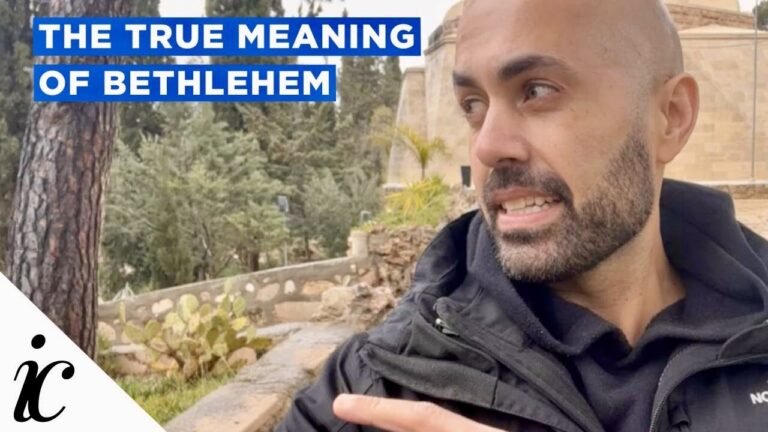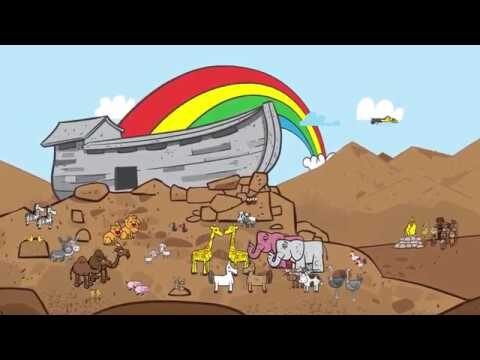The Names of Noah’s Sons Explained
In the rich tapestry of biblical history, the names of Noah’s sons hold significant meaning and intrigue. These figures, Shem, Ham, and Japheth, not only played pivotal roles in the aftermath of the Great Flood but also symbolize the diverse branches of humanity that emerged thereafter. Understanding their names and the legacies they left behind offers valuable insights into the cultural and religious narratives that have shaped civilizations across the globe. Join us as we explore the identities and stories of Noah’s sons and their enduring impact on our world today.
What was the name of Noah’s son?
Noah had three sons, each with distinct roles in the biblical narrative: Shem, Ham, and Japheth. These names have carried significant weight through history, symbolizing the diversity of humanity that emerged after the Great Flood. Each son is often seen as the ancestor of different nations and peoples, reflecting the broader themes of legacy and renewal inherent in Noah’s story.
Who is considered to be Noah’s first son?
Noah’s family played a pivotal role in the biblical narrative, with his sons Shem, Ham, and Japheth often discussed in relation to the great flood. While modern interpretations typically present these brothers in a certain birth order, the textual evidence is not always consistent. This has led to various interpretations among scholars and religious traditions.
In Rabbinic literature, Japheth is frequently acknowledged as Noah’s eldest son. This designation, however, does not negate the complexities surrounding the birth order of Noah’s sons, as different texts and traditions may place emphasis on different siblings. The texts are rich in symbolism and deeper meanings that extend beyond mere lineage.
Understanding the significance of Noah’s sons provides insight into the broader themes of the biblical narrative, including the notions of inheritance, legacy, and the continuation of human civilization after the flood. Ultimately, the discussions surrounding their birth order reflect the diverse interpretations and rich traditions that have evolved over centuries, highlighting the enduring fascination with these foundational figures.
Who are Noah’s sons and daughters?
Noah, a pivotal figure in biblical history, is traditionally noted for his three sons: Shem, Ham, and Japheth. These sons played significant roles in the post-flood world, with each lineage contributing to the spread of humanity across the earth. While the biblical narrative is rich with their stories, it interestingly omits any mention of a daughter, suggesting a focus on the male lineage during that time.
Imagining a daughter of Noah opens up a realm of possibilities. Had she existed in a later era, she might have chronicled her family’s journey and the profound events of her time, perhaps shaping the narratives we hold dear today. However, the absence of writing during her hypothetical lifetime meant her stories remained untold, lost in the annals of history, awaiting the eventual emergence of scribes like Ezra, who would later preserve the rich tales of humanity’s early days.
Unraveling the Legacy: Understanding Shem, Ham, and Japheth
The biblical figures of Shem, Ham, and Japheth are pivotal in understanding the genealogical and cultural narratives that have shaped human history. As the three sons of Noah, they represent the diverse lineages that emerged after the Great Flood, each contributing uniquely to the tapestry of civilization. Shem is often associated with the Semitic peoples, Ham with the African nations, and Japheth with the Indo-European cultures. This tripartite division not only illustrates the spread of humanity across the globe but also the varying roles and influences these lineages have had throughout history.
In exploring their legacies, we discover a complex interplay of myths, traditions, and historical accounts. Shem’s descendants are linked to the Abrahamic faiths, which have profoundly influenced Western thought, ethics, and spirituality. Meanwhile, Ham’s lineage is often discussed in the context of social and racial dynamics, particularly in the discourse surrounding colonialism and identity. Japheth’s descendants are frequently associated with the expansion of empires and trade networks, showcasing the economic and cultural exchanges that have enriched societies.
Understanding the narratives surrounding Shem, Ham, and Japheth allows us to appreciate the intricate connections between ancestry and cultural identity. Their stories are not just about lineage; they reflect broader themes of diversity, conflict, and unity. By unraveling these legacies, we gain insight into the historical forces that have shaped our world, urging us to recognize the shared humanity that transcends our differences and to foster a deeper appreciation for the rich mosaic of cultures that define our global society.
Beyond the Ark: The Significance of Noah’s Sons
Noah’s sons, Shem, Ham, and Japheth, play a pivotal role in the narrative of the Ark, serving as esencial figures in the continuation of humanity after the Flood. Their diverse lineages are believed to represent different nations and cultures, illustrating the spread of human civilization across the globe. Each son embodies distinct qualities and legacies, emphasizing the importance of collaboration and unity in rebuilding a world that had been decimated by divine judgment.
As the foundations of the world’s ethnic and cultural diversity, the stories of Noah’s sons highlight the significance of familial bonds and responsibilities. Shem is often associated with the Semitic peoples, Ham with the African nations, and Japheth with the Indo-European tribes. This division not only underscores the interconnectedness of humanity but also reflects the rich tapestry of history shaped by their descendants. The narratives surrounding their journeys encourage a deeper appreciation for the complexities of identity and heritage.
The legacy of Noah’s sons extends beyond mere genealogy; it serves as a reminder of resilience and hope. After the chaos of the Flood, they became symbols of new beginnings, embodying the potential for growth and renewal. Their stories urge us to recognize the value of our shared history and to foster understanding among diverse communities. In doing so, we honor their role as the progenitors of humanity and embrace the collective journey that continues to unfold across generations.
The Roots of Humanity: Exploring the Lineage of Noah’s Offspring
From the ancient tales of scripture to modern genealogical studies, the lineage of Noah’s offspring reveals profound connections that bind humanity together. Each descendant carries a unique story, reflecting the diverse cultures and traditions that have emerged over millennia. These narratives not only trace our ancestry but also highlight the shared values and experiences that unite us as a species. By delving into the roots of these familial ties, we uncover a rich tapestry of human history, reminding us that despite our differences, we all stem from a common origin, fostering a deeper appreciation for the intricate web of life that weaves us together.
The legacy of Noah’s sons—Shem, Ham, and Japheth—continues to resonate through history, symbolizing the diverse branches of humanity that emerged after the Great Flood. Each son’s lineage has played a significant role in shaping cultures, nations, and civilizations across the globe. Understanding their stories not only enriches our knowledge of biblical narratives but also highlights the interconnectedness of all people, reminding us of our shared origins and the enduring impact of our ancestors.







